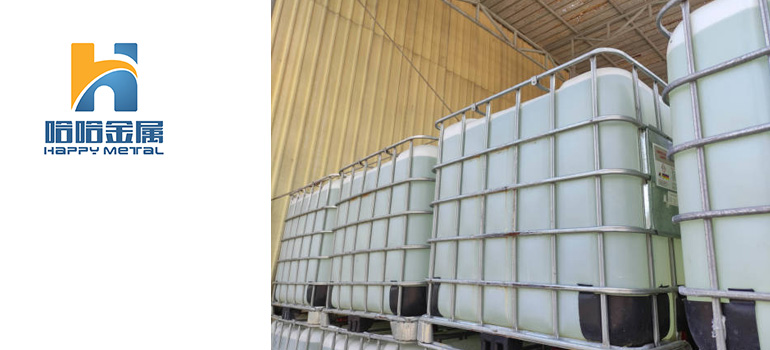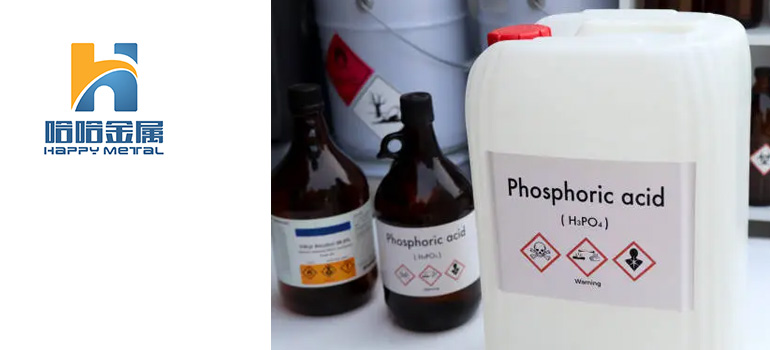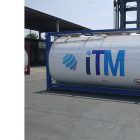Summary:
Why Food Grade Phosphoric Acid is Essential in the Beverage Industry?
How Food Grade Phosphoric Acid Enhances the Taste of Soft Drinks?
The Benefits of Food Grade Phosphoric Acid in Beverage Preservation
How Food Grade Phosphoric Acid Enhances Carbonated Beverages?
Food Grade Phosphoric Acid in the Beverage Industry: Environmental Impact and Sustainability
In the beverage industry, achieving the perfect balance of flavors is crucial for product consistency and consumer satisfaction. Food grade phosphoric acid plays a key role in shaping the overall flavor profile of many popular drinks, especially soft drinks, energy drinks, and fruit juices. While it’s commonly associated with providing a tangy or acidic taste, its function extends far beyond just flavor enhancement. Let’s explore how food grade phosphoric acid impacts the flavor of beverages and its importance in beverage formulation.
How Food Grade Phosphoric Acid Enhances the Taste of Soft Drinks
One of the primary functions of food grade phosphoric acid in the beverage industry is to impart a sharp, clean acidity that balances sweetness and other flavors in carbonated drinks. It is a natural acidulant, meaning it lowers the pH of a beverage, providing a tartness that helps counterbalance the sweetness from high fructose corn syrup, cane sugar, or artificial sweeteners commonly used in soft drinks. This balance is essential for ensuring that the beverage tastes refreshing without being overly sweet.
Phosphoric acid also contributes to the overall mouthfeel of a drink. The tangy acidity can create a crisp, more “invigorating” sensation on the palate, which is particularly valued in carbonated beverages. It’s this sharpness that defines the classic taste of sodas like cola, where food grade phosphoric acid enhances the characteristic “bite” that consumers expect.
The Impact of Food Grade Phosphoric Acid on pH Levels in Beverages
The acidity level of a beverage directly influences its overall flavor and shelf stability. Food grade phosphoric acid is often used to adjust the pH of a drink to the desired level, typically between 2.5 and 4.0 for many soft drinks. This precise control over pH is essential because it not only affects the flavor but also helps preserve the drink by making it inhospitable to harmful microorganisms.
By lowering the pH, phosphoric acid enhances the perception of freshness and sharpens other flavors in the beverage. For example, in a cola, the acidity from phosphoric acid works with the complex mix of flavors like vanilla, cinnamon, and citrus to create a harmonious profile. At the same time, its ability to prevent spoilage and oxidation keeps the product safe and stable over time.
The Benefits of Food Grade Phosphoric Acid in Beverage Preservation

In the highly competitive beverage industry, ensuring a product’s freshness, safety, and shelf stability is paramount. Consumers demand products that not only taste great but also have a long shelf life without compromising quality. One of the key ingredients that help achieve these goals is food grade phosphoric acid. This versatile compound offers multiple benefits when it comes to preserving beverages, making it an essential component in beverage formulations.
Let’s explore the key ways food grade phosphoric acid contributes to the preservation of beverages and why it’s considered indispensable in modern beverage production.
Extending Shelf Life through pH Control
One of the primary functions of food grade phosphoric acid in beverage preservation is its ability to lower and stabilize the pH of the product. This acidic environment inhibits the growth of microorganisms, including bacteria, yeast, and molds, which can spoil beverages and make them unsafe for consumption.
Inhibiting Microbial Growth
Preventing Oxidation
Improving Beverage Freshness and Taste Stability
Over time, beverages can lose their freshness due to changes in flavor, color, and texture, especially when exposed to air or when stored improperly. Food grade phosphoric acid works as an effective stabilizer, helping preserve the beverage’s original taste and freshness.
Maintaining Flavor Consistency
Color Preservation
Enhanced Safety and Regulatory Compliance
The use of food grade phosphoric acid in beverages isn’t just about improving shelf life or taste—it also plays a crucial role in ensuring product safety and complying with food safety regulations. Food safety is a major concern for both manufacturers and consumers, and phosphoric acid helps beverage producers meet the highest standards of hygiene and safety.
Compliance with Food Safety Standards
Minimizing the Need for Artificial Preservatives
Cost-Effectiveness and Sustainability
While food grade phosphoric acid offers multiple benefits in terms of preservation, it is also a cost-effective solution for manufacturers looking to improve shelf life without significantly increasing production costs. Phosphoric acid is widely available, affordable, and easy to use, making it a go-to preservative in the beverage industry.
Cost-Effective Preservation
Sustainability Benefits
Food grade phosphoric acid is a cornerstone of beverage preservation, offering numerous benefits that help maintain product freshness, safety, and quality over time. From microbial inhibition and oxidation control to maintaining flavor consistency and extending shelf life, it plays an indispensable role in ensuring beverages remain safe, appealing, and enjoyable for consumers.
For beverage manufacturers, the use of food grade phosphoric acid provides a cost-effective, safe, and sustainable means of preserving products while meeting regulatory requirements and consumer expectations. In a world where product quality and safety are top priorities, food grade phosphoric acid continues to be an essential ingredient in preserving the integrity of beverages across the globe.
How Food Grade Phosphoric Acid Enhances Carbonated Beverages
Carbonated beverages are beloved for their refreshing fizz and distinctive flavor profiles. These drinks, from classic sodas to energy drinks, owe much of their appeal to the careful balance of ingredients, with food grade phosphoric acid playing a crucial role in shaping both their taste and effervescence.
In this section, we’ll explore the multifaceted ways food grade phosphoric acid enhances carbonated beverages, including its impact on flavor, carbonation stability, and overall product quality.
Creating the Ideal Balance of Acidity and Flavor
Phosphoric acid is primarily used in carbonated beverages to provide tartness and balance the sweetness of ingredients like sugar or high fructose corn syrup. The sharp acidity it imparts is key to defining the characteristic taste of many popular sodas, including cola.
Enhancing Taste by Balancing Sweetness
Shaping the “Bite” of Carbonated Beverages
Stabilizing Carbonation and Enhancing Effervescence
Phosphoric acid plays an indirect but significant role in maintaining the effervescence of carbonated beverages. The stability of carbonation is critical to ensuring that the drink maintains its bubbly texture and refreshing feel over time.
Inhibiting Carbon Dioxide Loss
Improving the Mouthfeel and Sensory Experience
Ensuring Consistency and Quality Control
The consistent quality of carbonated beverages is vital for large-scale production and consumer satisfaction. Food grade phosphoric acid helps beverage manufacturers maintain flavor consistency and product stability, ensuring that each batch of soda or cola tastes the same and performs consistently.
Standardizing pH Levels for Uniform Flavor
Shelf Stability and Product Integrity
The Role of Phosphoric Acid in Cola and Other Carbonated Soft Drinks
The most well-known use of food grade phosphoric acid is in the formulation of cola beverages. Here, the acid plays a central role in achieving the drink’s signature flavor and mouthfeel.
Signature Taste of Cola
Carbonation and Texture in Cola
Food grade phosphoric acid is a critical ingredient in the production of carbonated beverages, contributing to the flavor balance, carbonation stability, and consistency of the final product. Whether it’s providing the refreshing tartness that balances sweetness, preserving carbonation to ensure the fizz lasts, or enhancing the overall mouthfeel and sensory experience, phosphoric acid plays a fundamental role in the appeal of drinks like cola and other sodas.
Its impact is far-reaching—ensuring that carbonated beverages are both delicious and stable, maintaining their quality from the production line to the consumer’s first sip. Without food grade phosphoric acid, carbonated beverages wouldn’t have the same refreshing bite, consistent taste, or long-lasting effervescence that make them so popular around the world.
Food Grade Phosphoric Acid in the Beverage Industry: Environmental Impact and Sustainability
The beverage industry relies heavily on various ingredients and chemicals to ensure product quality, consistency, and safety. One such ingredient, food grade phosphoric acid, plays a crucial role in products like carbonated drinks, juices, and flavored beverages. While its use is widely accepted and regulated for safety and efficacy, there is an increasing focus on its environmental impact and sustainability—especially as the beverage sector adapts to more eco-conscious consumer demands and strives to reduce its environmental footprint.
Sustainability Practices in the Beverage Industry
While food grade phosphoric acid does have environmental challenges associated with its production, beverage companies are increasingly adopting sustainability measures to reduce their environmental footprint. These measures focus on reducing energy consumption, minimizing waste, and exploring alternative sources for phosphoric acid.
Green Chemistry and Sustainable Sourcing
Green chemistry is an emerging trend in the production of food grade phosphoric acid, aiming to minimize harmful environmental effects through innovative, environmentally friendly chemical processes. One example is the use of phosphate recycling from industrial by-products, such as animal manure, which can be used as a sustainable alternative to traditional phosphate mining.
Some beverage manufacturers are beginning to source phosphoric acid from suppliers who use more sustainable practices in their production processes. This could include the use of cleaner energy, the adoption of carbon capture technologies, or the reduction of harmful waste in the manufacturing process. By partnering with these suppliers, beverage companies can reduce their overall environmental footprint.
Efficient Energy Use and Carbon Footprint Reduction
Beverage companies are increasingly implementing energy-efficient technologies and renewable energy sources in their production facilities. By using solar power, wind energy, or geothermal energy in their manufacturing plants, they can reduce the overall carbon emissions associated with food grade phosphoric acid production.
Additionally, some beverage manufacturers are exploring low-carbon options for transportation and logistics, aiming to reduce the carbon footprint of their entire supply chain, from sourcing raw materials to delivering finished products.
Waste Reduction and Circular Economy
A key sustainability initiative within the beverage industry is the adoption of the circular economy model, which emphasizes reducing waste and recycling materials to reduce environmental impact. This approach can be applied to phosphoric acid production through the reuse of by-products like gypsum in the construction industry or the conversion of wastewater into reusable water sources through treatment technologies.
Some companies are also focusing on reducing their overall use of phosphoric acid by improving formulation techniques and utilizing alternative acidulants or other preservation methods where possible, without compromising on product quality.
Packaging Innovations and Sustainability in the Beverage Sector
While food grade phosphoric acid plays a significant role in the production of beverages, the environmental impact of its use extends beyond the acid itself. Packaging is a major contributor to the overall environmental footprint of beverages, and the industry is working to reduce the environmental impacts associated with plastic and non-recyclable materials.
Sustainable Packaging Materials
Beverage companies are increasingly shifting to sustainable packaging solutions, such as recycled PET bottles, biodegradable materials, and plant-based plastics. By reducing reliance on traditional plastic packaging, which is often difficult to recycle, the industry can significantly lower its carbon footprint.
Some beverage manufacturers are also focusing on the development of refillable or returnable bottle systems, which help minimize single-use plastic waste and reduce the demand for raw materials.
Reducing Plastic and Enhancing Recycling Programs
Many beverage companies are adopting zero-waste goals, where the aim is to eliminate plastic waste and increase recycling rates. These programs can include collecting used bottles at the point of sale or encouraging consumers to recycle their packaging responsibly.
Major brands have committed to using 100% recyclable packaging and increasing the recycled content in their bottles. These moves are part of the broader plastic waste reduction efforts within the beverage industry.
While food grade phosphoric acid is essential for maintaining the quality, safety, and flavor of many popular beverages, its production and usage do have environmental consequences, particularly in terms of resource extraction, energy consumption, and waste generation. However, the beverage industry is making significant strides toward sustainability by adopting greener production methods, seeking more sustainable sourcing practices, and implementing recycling and waste reduction strategies.
As consumers continue to demand eco-friendly products, the beverage industry will likely embrace even more innovative, sustainable solutions, helping to reduce the environmental impact of food grade phosphoric acid and other ingredients in the production of beverages. By working together to prioritize sustainability, both manufacturers and consumers can contribute to a more environmentally responsible future for the beverage industry.




